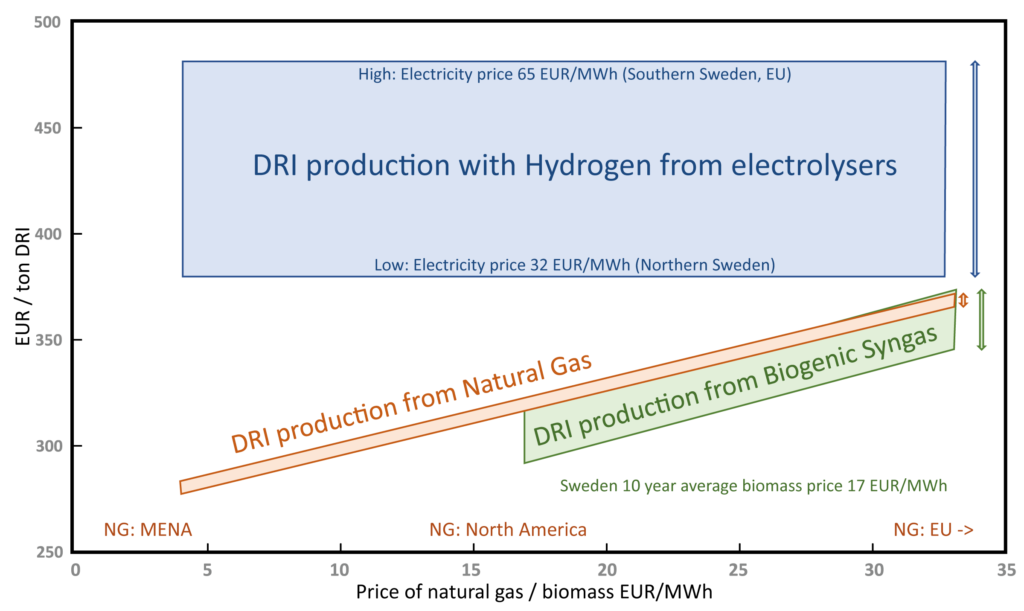
Kostnadsberäkningar: [Gyllenram och Samuelsson 2022] FerroSilva genomförbarhetsstudie
Choice of reducing agent for DRI
The FerroSilva feasibility study made this comparative cost calculation.
The figure shows the production cost (Y-axis) for DRI produced with natural gas+CCUS (brown), biomass+CCUS (green) and hydrogen (blue) at different natural gas and biomass prices (X-axis) at an electricity price of 32 EUR/MWh and 65 EUR/MWh as shown by the height of the lines. In the comparison, only the price of the reducing agent changes while everything else remains constant, such as the price of ore and transport.
DRI is currently produced with natural gas in those parts of the world where it is cheap, such as the Middle East, the Gulf States, North Africa, Mexico and the USA. By collecting and storing CO2, emissions can be reduced to near zero. A number of projects with this solution are planned, but so far only in one case where about half of the carbon dioxide is used to pressurise oil wells.
Reduction with hydrogen has been known for more than 100 years but has not yet progressed beyond the experimental stage. One problem cited is the technical maturity of electrolysers; another would be that the heat balance is more difficult to maintain when reducing with hydrogen than with a mixture of hydrogen and carbon monoxide.
Reduction with biogenic syngas differs from natural gas and hydrogen in that the collection and utilisation of the carbon dioxide formed generates a carbon sink and is a source of income.
A cost calculation of this kind can only provide a rough estimate of what a future cost situation might look like. However, there is a relationshipbetween the price of natural gas, biomass and electricity as they can substitute each other and an increase or decrease in one price leads to the others following suit.
The conclusion is that reduction with biogenic syngas is competitive in regions with biomass availability and medium prices for electricity and natural gas.
